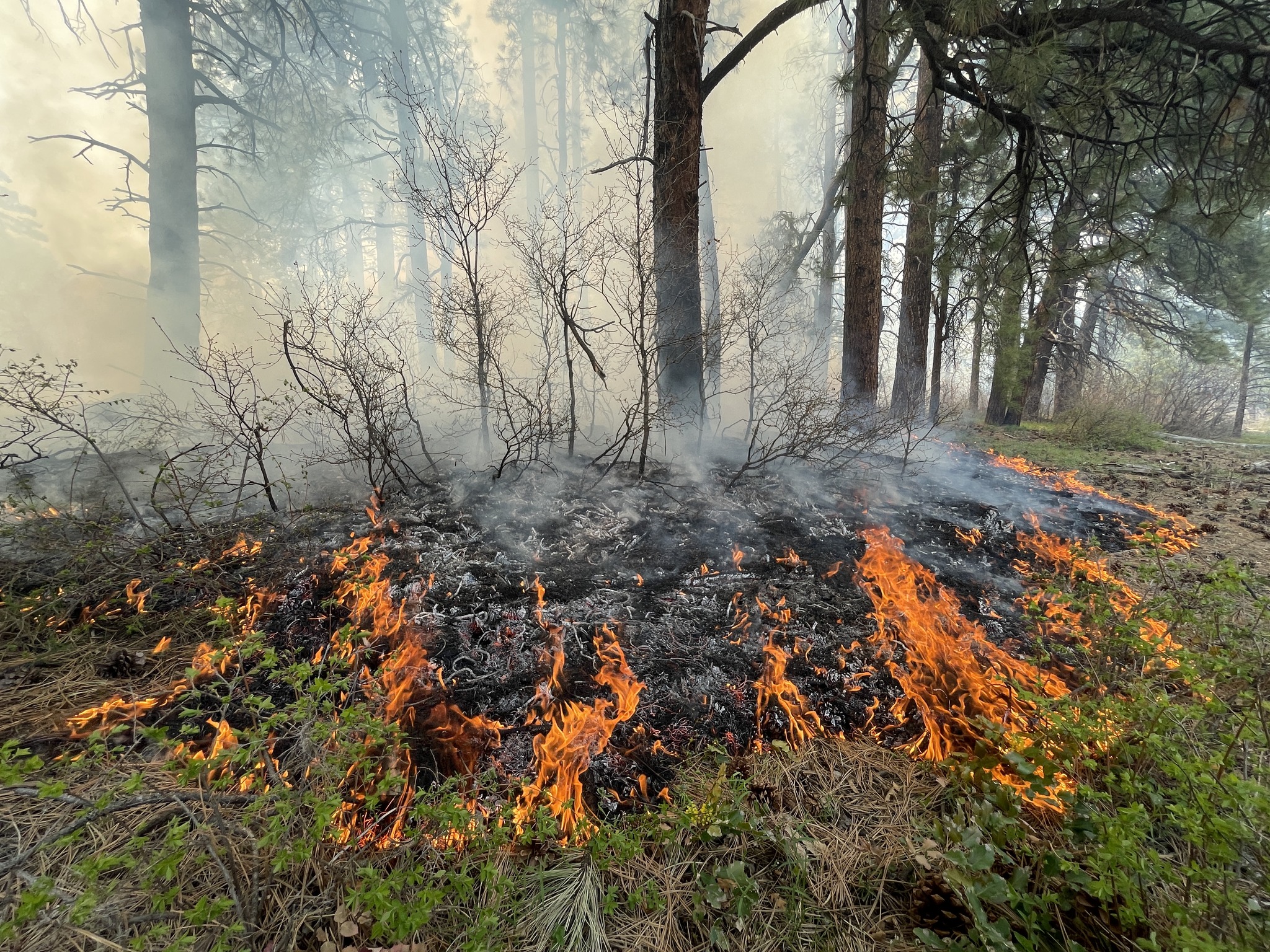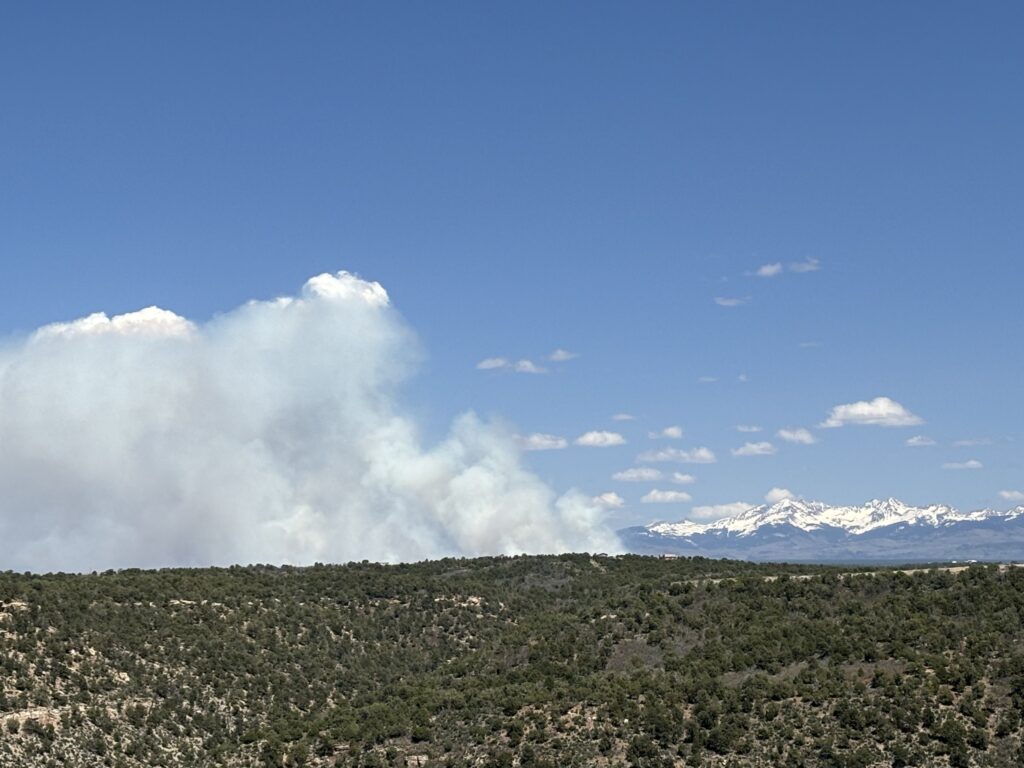
Heavy smoke from a wildfire burning in the San Juan National Forest northeast of Dolores has prompted authorities to issue an air quality alert for southwestern Colorado, but firefighters on the ground say that they have control of the fire.
Lightning likely sparked the Spruce Creek fire on May 14, but the blaze doubled in size overnight and is now covering more than seven square miles. More than 150 firefighters are working to contain the blaze, which is burning through trees, shrubs and ground vegetation.
Crews have not yet contained the fire, but the Rocky Mountain Area Coordination Center — a federally directed consortium of land managers that coordinate wildfire response.— reports that firefighters on the ground have cut down trees and dug fire breaks to control its spread.
No evacuations have been ordered, and no homes or buildings have been damaged, but the U.S. Forest Service has closed roads near the fire.

The Colorado Department of Public Health and Environment has warned that smoke from the wildfire could blow into Telluride, Ouray, Silverton, Lake City, Creede, and other areas near the national forest and is advising people in the area to limit outdoor activity, especially very young and elderly residents or those with heart or breathing conditions. Smoke could persist in the region through Friday morning, according to the advisory.
The Spruce Creek fire’s rapid growth is due, in part, to firefighters and forest officials deciding earlier this week to let the fire grow in a controlled way to reduce long-term wildfire risk.
Mike DeFries, a public information officer with the Southwest Area Incident Management Team, said firefighters are using forest roads, terrain and rocky outcroppings to help crews encircle the blaze and allow it to burn off “a lot of old ground fuels that have gotten thicker over the decades.”









